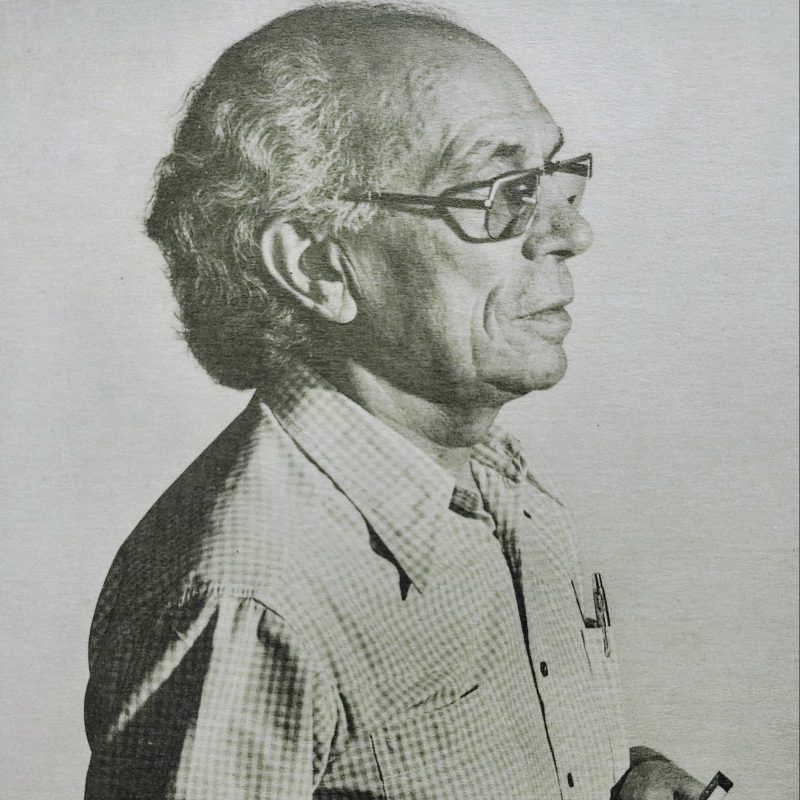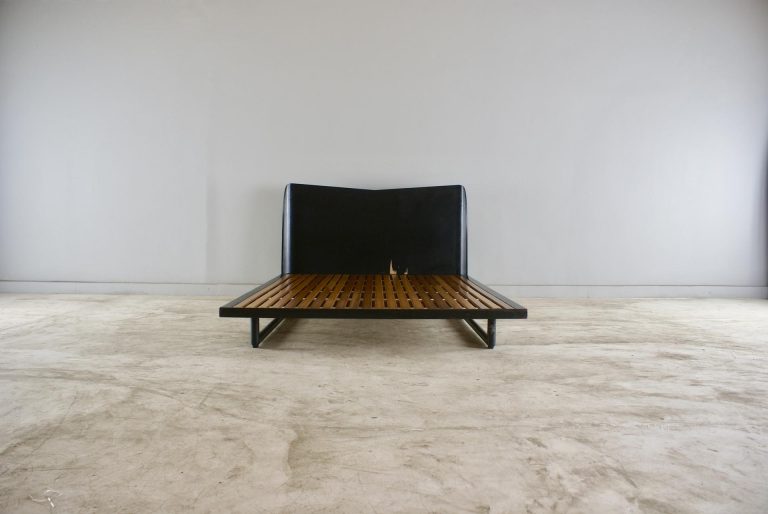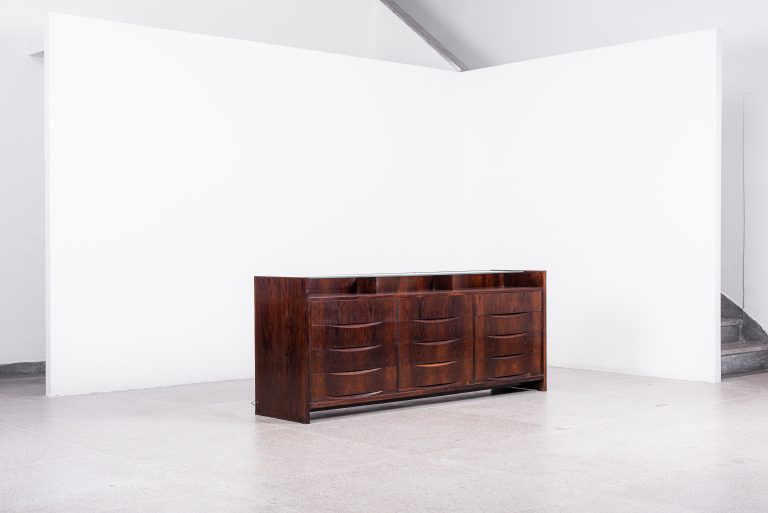was born in Melo, a small village in Portugal, and settled in Rio de Janeiro in 1928. Son and grandson of carpenters, he learned to work with wood as a child. In 1929, he studied drawing at the Liceu Literário Português, at the same time studying at the Liceu de Artes de Ofícios. In 1931, he participated in the Bernardelli School, having as colleagues, among others, the painters José Pancetti (1902-1958) and Milton Dacosta (1915-1988). He worked, between 1933 and 1943, as a designer at the firms Laubish & Hirth, Leandro Martins and Francisco Gomes, specializing in furniture in French, Italian and Portuguese styles – “Louises of all sizes and late 400-year rebirths”, as Tenreiro reports, Ironically. In 1943, he founded the company Langenbach & Tenreiro, putting into practice his concept of modern furniture.
He became known as a designer in 1942, when he received the first furniture order for Francisco Inácio Peixoto’s residence, in Cataguases, Minas Gerais, designed by the architect Oscar Niemeyer (1907-2012). These are the first examples conceived, designed and made by him, which are distinguished by the sobriety and beauty of the shapes and the wise use of Brazilian woods. He also dialogues with the purity of Niemeyer’s architectural forms.
The Light Armchair (ca.1942) – made in light versions, in ivory wood, and dark, in imbuia, with fabric printed by Fayga Ostrower (1920 – 2001) – is one of her best known productions, conceived according to the idea that Brazilian furniture should be formally lighter. In the words of Tenreiro, lightness that has nothing to do with weight itself, but with grace and functionality. Attesting to the modernity of furniture made in Brazil, Tenreiro’s design is based on suitability for function and simplicity.
In the Three-Foot Chair (ca.1947), he innovates by associating geometry with a very particular use of the colors of national woods. Composed of wood combinations of different shades (imbuia, purple, rosewood, ivory and cabreúva), this chair presents a refined chromatic game. The use of color, previously restricted to furniture finishing, becomes a central concept in his creation. In the Rocking Chair (ca.1948) he uses straw – a tradition of Brazilian colonial furniture, taken up by the artist – and rosewood. Like other Tenreiro furniture from this period, it has a light and luminous appearance, contrasting with the solid and sober furniture, previously created for the firm Laubisch & Hirth.
In some chairs and armchairs, the artist explores the plastic effects of the weave in straw and other materials that evoke indigenous braiding and basketry. The use of wood and natural fibers is associated with the need to adapt the furniture to the tropical climate. Along with these organic compositions, other pieces by Tenreiro, such as the Structural Chair, feature straight lines and regular geometric elements, employing both wooden (1957) and metal (1961) structures. The in-depth knowledge of wood allows Tenreiro to obtain the poetic quality of his works.
At the end of the 1960s, for personal and market reasons, he ended his activities as a designer and devoted himself mainly to sculpture. He produces reliefs, trusses and columns in polychrome wood, in which the combination of artistic production and extensive knowledge of the work stand out. Some solutions, contained in the functionality of the furniture created by him, are used more freely in the sculpture. The chromatic composition techniques used, for example, in the Three-Foot Chair, are later taken up in some reliefs, in which the artist explores the differences in color, textures and wood grains, as in Círculos (1979). Tenreiro’s production therefore combines the modern characteristics of simplicity and simplicity with the use of Brazilian materials. It ensures to the pieces produced an artistically elaborated quality, thus renewing the design of Brazilian furniture.
• Source: JOAQUIM Tenreiro. In: Itaú Cultural Encyclopedia of Brazilian Art and Culture. São Paulo: Itaú Cultural, 2022. Available at: http://enciclopedia.itaucultural.org.br/pessoa10084/joaquim-tenreiro. Accessed: October 25, 2022. Encyclopedia entry. ISBN: 978-85-7979-060-7









